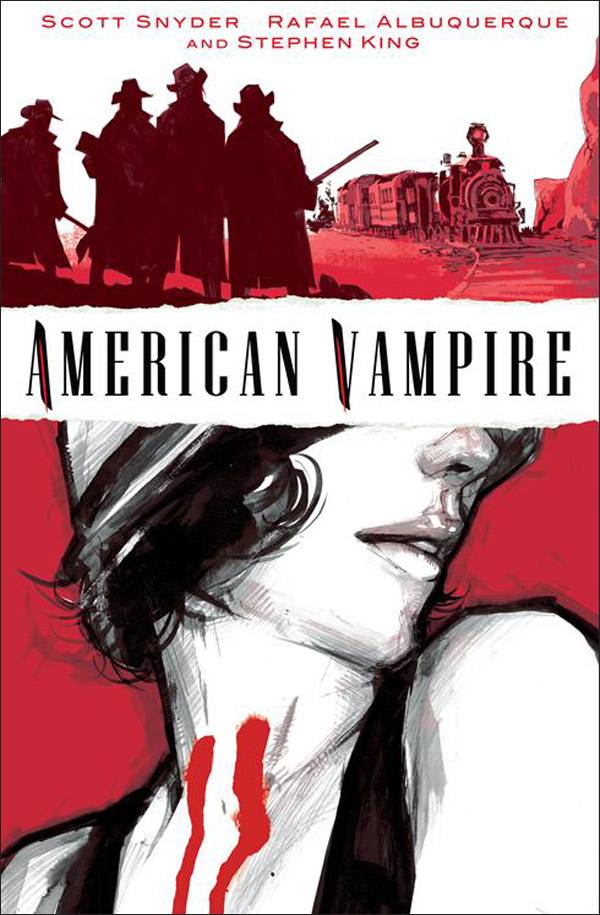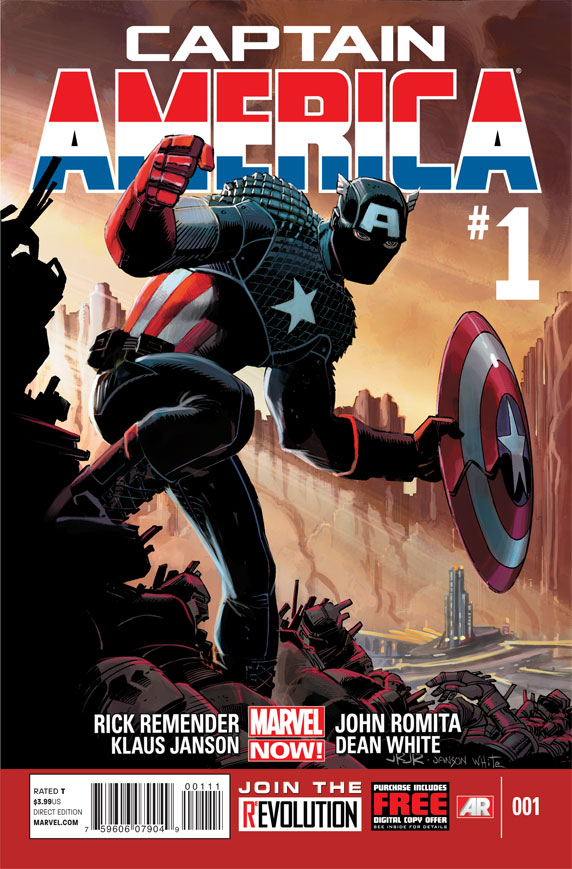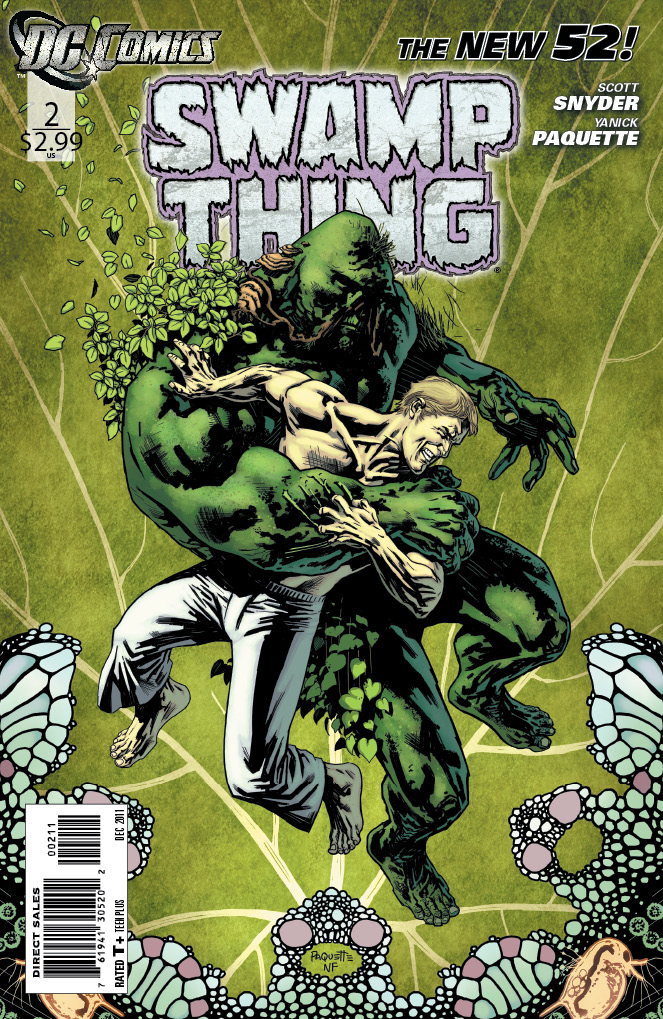Chapter One: “Big
Break” and “Bad Blood”
written by Scott Snyder and Stephen King
art by Rafael Albuquerque
Ladies and gentlemen, may I present Skinner Sweet! Already in its first issue, Scott Snyder’s
epic ambitions for his American-Dream horror saga are evident, but its ambition
takes a minor toll on the structure and pacing of its opening episode. American
Vampire #1 introduces so many characters—aspiring starlet Pearl Jones, her
roommate Hattie, her amatory admirer Henry, leading man Chase Hamilton, vampire
movie producer B. D. Bloch, vampire scoundrel and
American outlaw Skinner Sweet, writer Will Bunting, Pinkerton agent James Book,
his fiancée Ella Langum, Ronnie Jeeks and the rest of Sweet’s posse, deputy
Felix Camillo, Henry Finch, vampire banker and European capitalist Percy—that none receives much
nuance…yet. Though the immediate
characterizations of Snyder’s cast are sporadic and patchy, they betray a
larger sense of history and detail underlying the episode’s action and
characters. The issue’s clutter of
characters, then, ultimately becomes a strength, a tantalizing suggestion of a
deeper history and a cast with complex motivations.
Without a doubt, bank robber and outlaw cowboy Skinner Sweet
is the most instantly charismatic of the lot.
Introduced first as a pair of cowboy boots dangling from a folding deck
chair, he spends “Big Break” lounging outside Pearl and Hattie’s apartment in
shorts, a snugly fitting tank top, and a fedora and exchanging barbs with
strong-willed Pearl. While he quite
easily could have remained little more than a leering, predatory stalker—and
certainly his smirk maintains that possibility—Sweet’s body language instead
invites attention, positioning himself as the object of the ladies' sexualizing stares more
than the aggressor. Sweet, no doubt, is fully aware of his cruel nature, and when he half-jokingly admits to Pearl that he's something "much worse" than an elephant man, he's not lying. But his follow-through--"...but I'm pretty on the inside"--strangely doesn't come off like a lie either.
As he so often does, Snyder opens his series with a
childhood recollection, a moment of innocence and wonder superimposed on the
issue’s creepiest and most horrific sequence, the dumping of Pearl’s barely
living body with a host of young female corpses. The events that led to her disposal fully flesh out the underlying metaphor of Snyder's European vampires: they are social, sexual, and economic predators, here feeding at will on the aspirations and Hollywood dreams of young, defenseless women.
The second act of American Vampire #1 offers a portrait of an alternative—or perhaps complementary—metaphor of the American variety. Sweet is a fiercely independent, seemingly sadistic outlaw with a disdain for authority, a casual disregard for human life, and a predilection for candy. His unintended transformation at the teeth of Percy solidifies him as something apart from them. While the supporting cast of his backstory barely amounts to more than western stereotypes here, King—as Snyder for Pearl—offers great promise for the further unveiling of Skinner Sweet's saga as told by the train wreck's bystander, reporter Will Bunting.
[May 2010]
As collected in American
Vampire, Volume 1 (ISBN 978-1401228309)






















